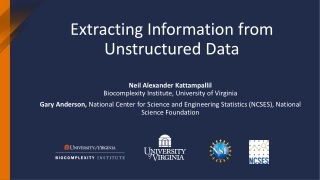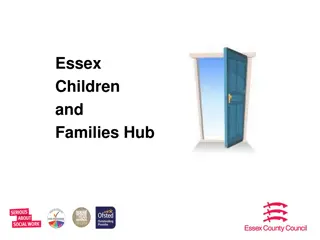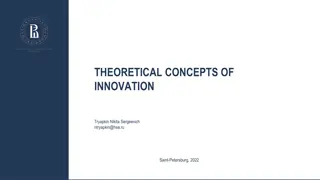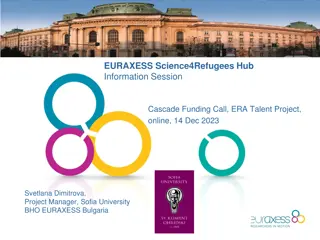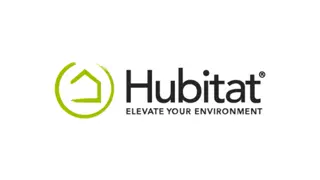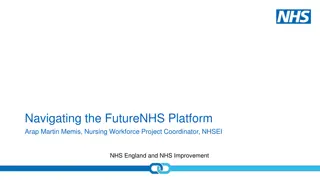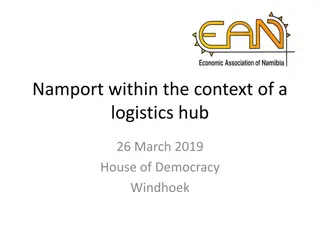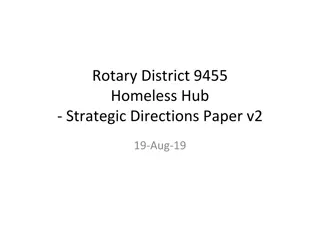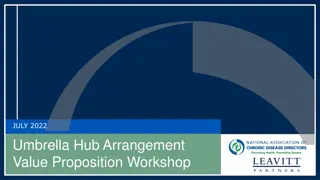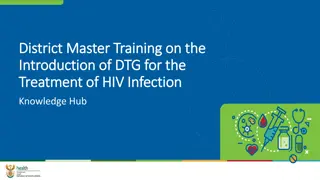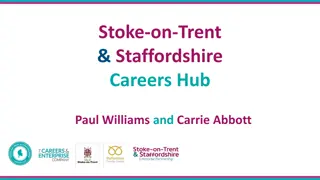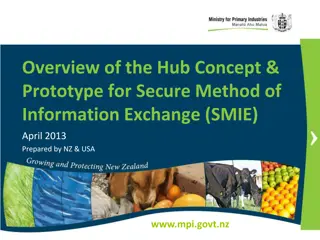
Innovative Strategies for Open University - Retention, Diversification, and Enablers
Enhance the Open University's brand and values by focusing on adult, engaging learning, supporting life-long learners, and diversifying delivery methods. Explore ideas for offering learning without constraints, developing learning as a service, and leveraging content distribution opportunities.
Download Presentation

Please find below an Image/Link to download the presentation.
The content on the website is provided AS IS for your information and personal use only. It may not be sold, licensed, or shared on other websites without obtaining consent from the author. If you encounter any issues during the download, it is possible that the publisher has removed the file from their server.
You are allowed to download the files provided on this website for personal or commercial use, subject to the condition that they are used lawfully. All files are the property of their respective owners.
The content on the website is provided AS IS for your information and personal use only. It may not be sold, licensed, or shared on other websites without obtaining consent from the author.
E N D
Presentation Transcript
Business Innovation Andrew Law Nov 2020 1
Context We need to retain and build on OU brand and values: Adult, engaging learning - with research informed pedagogy and content Flexible, part-time learning, open and on massive scale Support for life-long learners, wanting a more fulfilling life and work Build on reputation for supporting low-skills, low-confidence and excluded 2
Context We need diversification, but at present it needs to be delivered with (relatively) low: Demands on CAU capacity Demands on IT capacity Investment demand Disruption to BAU 3
Enablers We have content < 3% of module content is released onto OpenLearn, we could release more, for fee. We have a production strategy Making future content more distributable, reusable, smaller chunks for all of the above. We have platforms of mass delivery OpenLearn+ could quickly serve B2B, B2G, B2C with particular (but not exclusive) focus on low-confidence/ low-skills and the UK. 4
Ideas: Learning without strings (B2C/B/G) These short courses would not have the restrictions of 100hr+, for credit and with support micro-credentials.. These OL+ courses, would be shorter, non-credit, roll-on, roll-off courses. These would not need the investment in time or money required by bespoke short courses. However, OL+ could be used to distribute all forms of content including those proposed by central marketing . Low cost OU VLE FREE Examples: Enquirers The OU as a national skills for work provider See Skills for Work section on OL. Extending the national rollout of DWP JobCentre Plus proposition, replication of similar programmes focussed on supporting members of particular sectors, Unions, Trade memberships , Alumni, etc. OpenLearn+ FEE Income Enriching lives, feeding a thirst for learning, - See Skills for Life section in OL includes wellbeing (nutrition, mental health), leisure (history, psychology, arts, creative writing), family learning (how do children learn, grow, develop).Responding to the growth in grey pound and concern to keep brains active, Alumni, etc. Content only Learning without Strings Content with services (support, accreditation) 6
Ideas: Learning as a service (B2G/B) B2B: Learning as a Service: Curation of OL/OL+ materials supporting a particular sector, community or organisation within a dedicated micro-learning portal (initially on OL/OLC later ideally via commercial VLE). VLE Examples: a. Focussed Sector, Location or Organisation Support building on OU strong brand and public sector association focus on support of key sectors such as health, care, social work, teaching, public sector management and leadership. OpenLearn+ b. Specialist Redundancy Services curated suite of training and consulting services, which companies (or a region) could deploy as part of their regeneration programmes. Building on current DWP offer, with local customisation options c. FE support: Open and distance learningcapacity building for staff, development of distance learning skills (with options to license in student teaching content). Could be done with low impact on CAUs if exploiting existing content (MOADE etc). Learning as a service Subset of content curated for and targeted at an organization/sector Learning as a service (on commercial VLE and/or visible within clients VLE) 7
Ideas: Extending the range Open College Open University Open School Higher Tech Qualifications: We could be a knowledge curriculum provider in partnership with an IoT or a National College providing online curriculum and (optionally) online support. Functional Skills: Specific focus on supporting the significant need in Level 1-2 English and Maths diagnostic, learning, support, and exams. GCSE? Extending the range of content levels offered through partnership (some will overlap with FE/College provision), or a grander, national plan with BBC etc. 8
Ideas: Extending the transaction formats VLE Third Party OpenLearn+ B2C Individual sales B2C Subscription B2B Learning as a benefit B2B Seat licenses B2B Licensing B2C Revenue share 9
Outcomes Benefits Income prime focus (monetary) Diversity of income (more resilient, more opportunity) Users serving more users in need (mission support, brand reinforcement) Partners - developing new relations with organisations and sectors (brand enhancement) Innovation - of product line (more resilient, more opportunity) Minimal Disruption Academic capacity: Content will mainly be adapted from existing modules IT: The paywall for OL+ has already been designed and built. The VLE is a low investment bi-product of the already necessary work to move of our existing VLE to the cloud Investment: No new systems need to be built and content is being adapted not designed and developed BAU disruption: The impacts on BAU (and other business developments) should be low. 10
Business Innovation Hub (BIH) Ideas Capability BIH Enablers Market Test 11

